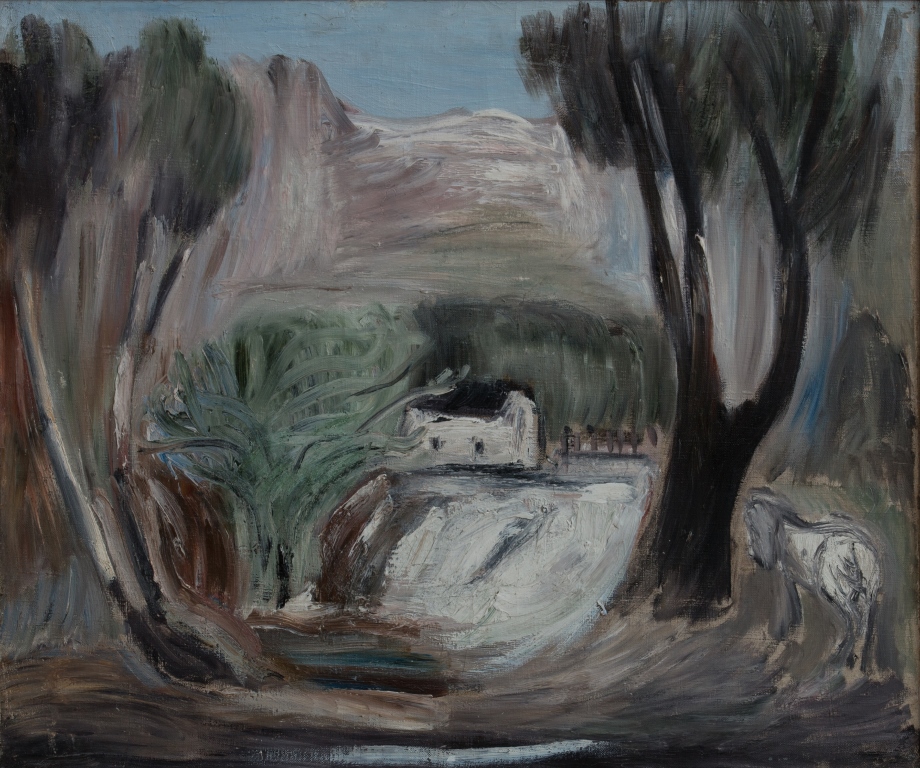

Painting, graphics from the collection of the State Tretyakov Gallery, State Russian Museum, Tula Museum of Fine Arts
September 13 at 4 pm in the exhibition hall of the VOKhM named after I.N. Kramskoy within the framework of the X International Platonic Festival of Arts the opening of the exhibition “Alexander Drevin and Nadezhda Udaltsova. Painting, graphics “.
On the opening day, admission to the exhibition is free.
Alexander Drevin (1889-1938) – painter, graphic artist, teacher. Drevin came from a Latvian-German family, studied in Riga – first at a nautical school, then at an art school. As one of the leaders of the Russian avant-garde, he participated in many art associations: “Green Flower”, “World of Art”, “Jack of Diamonds”, “Thirteen” and others. Drevin’s paintings were exhibited at the First Russian Art Exhibition in Berlin (1922), at 14 th Biennale in Venice (1924).
In his early works, one can see searches in the mainstream of post-impressionism, primitivism, rayonism, the artist creates both non-objective abstractions and figurative works, later he turns to landscapes and portraits in a more expressive manner.
The result of numerous creative trips to Altai, the Urals, Armenia, Kazakhstan in the 30s – landscapes in which Drevin’s interest in the picturesque problems of color, its saturation, texture is manifested – is subjected to harsh criticism for formalism. In 1938, Alexander Drevin was shot on a trumped-up charge related to the activities of the Latvian cultural and educational society “Prometheus”.
“Drevin’s painting is a chronicle of futile attempts to get used to the world.” New Newspaper
The daughter of a tsarist officer, the future “Amazon of the Russian avant-garde” Nadezhda Udaltsova (1886-1961) studied at private Moscow studios and the Parisian academy “Le Palette”. Her early work clearly showed her fascination with the “isms” of the beginning of the last century – Cubism, Suprematism, Impressionism. Together with her husband Alexander Drevin she worked at the People’s Commissariat for Education, taught at VKHUTEMAS and Inkhuk. The trips made in the 30s helped Udaltsova to develop a restrained, but dynamic expressionism, special in color and mood.
In the late, “quiet” period of creativity Udaltsov, already in the status of the wife of an enemy of the people, not knowing about his death, continues to paint. The more tragic are the realistic flowers and fruits of the late period of the Russian avant-garde woman.
“In the best things, the spouses achieved a deafening effect – the connection of human consciousness with the wild nature, which has already ceased to be a native home, but still allows you to feel its true greatness. If you look for analogies, you can recall the writings of Andrei Platonov – more precisely, about those pages where characters indulge in reflections about the place of homo sapiens in the Universe. Newspaper.ru
At both exhibitions of the festival “Alexander Drevin and Nadezhda Udaltsova. Painting, graphics “and” Mikhail Prekhner. Photo avant-garde of the 1930s ”there is a single ticket:
Full – 200 rubles
Preferential (pensioners, schoolchildren, students) – 160 rubles
The exhibition will run until October 4, 2020.
ATTENTION!
Exhibitions work according to the museum’s working hours:
Wednesday, Saturday, Sunday 10:00 – 18:00
Thursday 12:00 – 20:00
Friday 11:00 – 18:00
Monday, Tuesday – closed
The ticket office closes 20 minutes before the end of the exhibitions.
No more than 20 people are allowed in the exhibition hall at a time.
Visitors need a mask.
The work of exhibitions is carried out in the mode of self-examination.